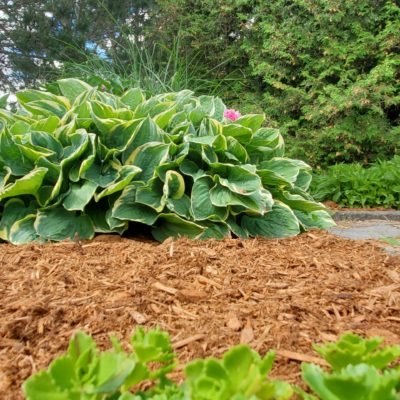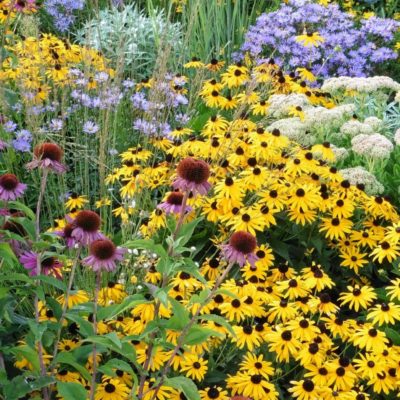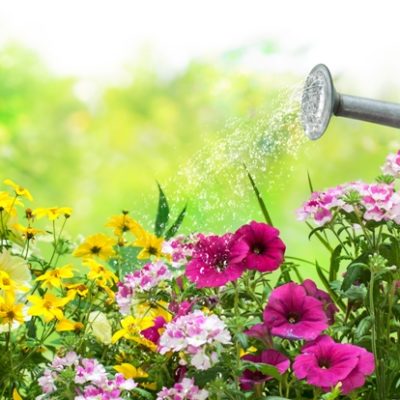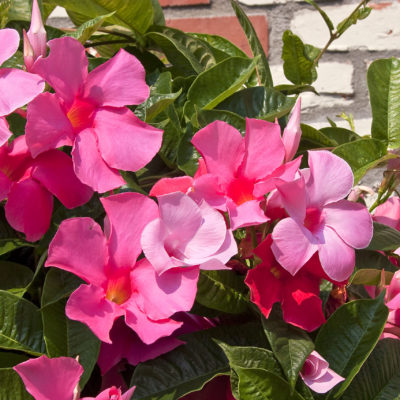
Success with Tropicals – General Care & Tips
Tropical Houseplants, like people, thrive in ideal locations but can also adapt to less than ideal situations, at least to a point. Growing requirements for your plants such as light, water, temperature, soil, nutrients, and humidity must be kept in balance to keep your plant happy and thriving.
Stress is often the #1 issue for Houseplants, and it can be caused by a single issue or a combination of many things. A move to a new location; being repotted; watering too often (kept too wet); drying out too much between watering; watering too little (kept too dry); sitting in water; too much light; not enough light; temperature fluctuations (heating vents, cold windows, close to exterior door); lack of humidity, etc. When plants are under stress, they can drop leaves and become susceptible to insects and diseases.
Sometimes Tropicals do well in environments that are “not recommended” – if your Houseplant is happy where it is, then leave it alone and let it thrive! However, if you see that particular varieties are not happy, or you have other concerns about their overall health, then you may have to make some changes.
Important: All plants have a lifespan; even with the proper care, light, water, and plant food, a plant can still die.
Tips:
– Avoid hot or cold drafts, such as an unheated sunroom in winter, near heat registers and exterior doors.
– When misting, mist in the morning to ensure leaves are dry overnight.
– Never use machine-softened water for any plants! This will leave a buildup of salts and will slowly kill your plants.
– When using insecticides or fungicides, try to use them on cloudy days to reduce sunburn and other damage to your plants.
– Turning plants, especially pots that are against a wall or in a corner, ensures even light distribution and will help your Houseplants grow upright and balanced.
– When transplanting, it is always best to choose a pot that has drainage. This will help keep the plant from sitting in water and reduce the risk of root rot.
Light:
Low Light: Indirect light. Usually North, Northeast windows. Also a room interior or any window with closed sheers.
Medium Light: A Bright location with Indirect light. East window with morning sun, West window with evening sun, or slightly away from a South window.
Direct Light: Bright, Sunny Direct light. Close to a window facing South or West. Three hours or more of sun daily. In summer these areas receive hot and intense sun.
Houseplants require different amounts of light depending on the variety. High light plants will require as much light as possible during the shorter days in winter, as they generally do not do well in lower light locations. When placing your plants, keep in mind that curtains or sheers will turn a high light location into a low light area.
In Low light conditions plants may drop their leaves to find balance with the available energy levels. Plants usually require less water when grown in lower light locations, as well as during winter months when light levels are reduced.
Watering:
Never use machine-softened water to water plants!
This will leave a buildup of salt and will slowly kill your plants.
Evenly Moist: Keep soil moist but not soggy. Never let dry out completely. Do not let sit in water.
Water Well: Allow soil to dry slightly then water thoroughly.
Dry Well: Allow soil to dry very well between waterings. Water only every 10 to 20 days or once a month, depending on pot size.
Incorrect watering practices are the #1 reason for most plant problems.
Always drain excess water away; plants left to sit in water can develop root rot. During the summer months you may need to water your pots more frequently; in winter months plants do not dry out as fast and need less frequent watering. The best way to water is from the top of the pot, letting the water soak all the way through the soil to the bottom until you see water coming out of the drainage holes.
Misting:
Some Tropicals prefer a slightly higher humidity than found in most homes, including Ferns, Orchids, Ficus, Citrus, and Hibiscus. Mist Houseplants with water once or twice a day to help increase the humidity. Avoid misting varieties with fuzzy leaves such as African Violets, as well as dry-loving plants like Cacti and Succulents.
Fertilizer:
For most Tropicals, it’s best to fertilize once a month throughout the year, excluding Cacti and Succulents which have their own feeding schedules. Use an all-purpose food for foliage varieties; for flowering Tropicals, use a flowering plant food while they are in bud and full bloom – many varieties do not flower during the fall and winter months due to lower light conditions.
Pruning:
Some Tropicals such as Hibiscus, Ficus, and Ivy will require occasional pruning to maintain a full and lush shape. Pruning is best done in spring and late fall, when the plants are adjusting to a new season’s arrival; your new branches will grow from the cut. Dracaena (all types), Dieffenbachia, and Chinese Evergreen can all be cut back if they are too tall, though they may take some time to send out their new branches. Regular cleaning and removal of old dying leaves on all Tropicals is very beneficial.
Repotting:
Most Houseplants prefer to be root bound, so that their roots fit snugly inside their pots without too much extra space or soil. Use a good quality indoor potting soil when repotting; for Cacti and Succulents, use a Cactus and Succulent soil mix.
You’ll know that your plant needs to be repotted when you see more roots than soil as you ease it out of its pot; you may also notice that it dries out faster and requires more frequent watering. When you transplant, move up only one pot size at a time: a 4” pot to a 5” pot, or a 10” pot to a 12” pot. If you put your plant in too big of a pot it will not dry out evenly, which can lead to root rot. It is always best to choose a pot that has drainage.





